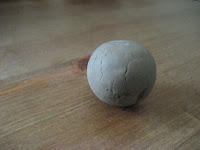Let me get to my point. I'm sure you are all aware of Energy Star's Appliances. But did you know that cool or green roofs are now earning the Energy Star label? Yup. Über reflective Energy Star roofs:
- reflect more of the sun's rays. This can lower roof surface temperature by up to 100F, decreasing the amount of heat transfer into a building.
- can last longer before needing replacement, because high temperatures, among other factors, shorten the lifespan of roofing materials. Cool roofs also help lower the air temperature surrounding houses, which helps fight the "heat island effect"—increased air temperature (2 to 8 degrees Fahrenheit) in cities versus rural areas.
- can help reduce the amount of air conditioning needed in buildings, and can reduce peak cooling demand by 10-15 percent.
They are approximately 50% more than what you'd pay for the composition itself on a standard roof. The installation costs are the same for Energy Star and standard roofs. So I ran the numbers on the house to calculate my yearly savings with an Energy Star roof. I also took into consideration the 30% federal tax credit that people receive when they install an Energy Star roof.
If you too are trying to figure out what's what in the world of cool roofing, you've also got to think about:
-- engineered lumber for framing (engineered wood is made from wood fibers bound with adhesives, resulting in less wood waste than solid-sawn lumber).
-- low or no formaldehyde strand board.
-- recycled newsprint or recycled newsprint and agricultural fibers for roof decking to eliminate waste.
-- Structural Insulated Panels (SIPs) for building a roof. This reduces the amount of framing lumber and cuts energy losses.
 --roofing felt made from recycled paper products reduces landfill and saves on the demand for natural resources.
--roofing felt made from recycled paper products reduces landfill and saves on the demand for natural resources. --metal roofing from recycled steel or aluminum utilizes wastes and saves energy, and the durability reduces replacement and maintenance costs.
--shingles made from recycled materials such as sawdust, cement, recycled rubber etc. puts waste to good use and provides lasting performance.
-- using different materials depending upon the pitch of your roof. Solar Reflectance Index requirements for an Energy Star rating are different for low and high pitched roofs.
So, I'm still in a quandary. I know it's the green thing to do, but I've got a budget to consider and lots of other projects and tasks to finish before using up all of my cash. So let me know, what do you think I should do?
A recent picture of our ceilings after the exterior and interior have been stripped. I wonder what will cover those rafters...










